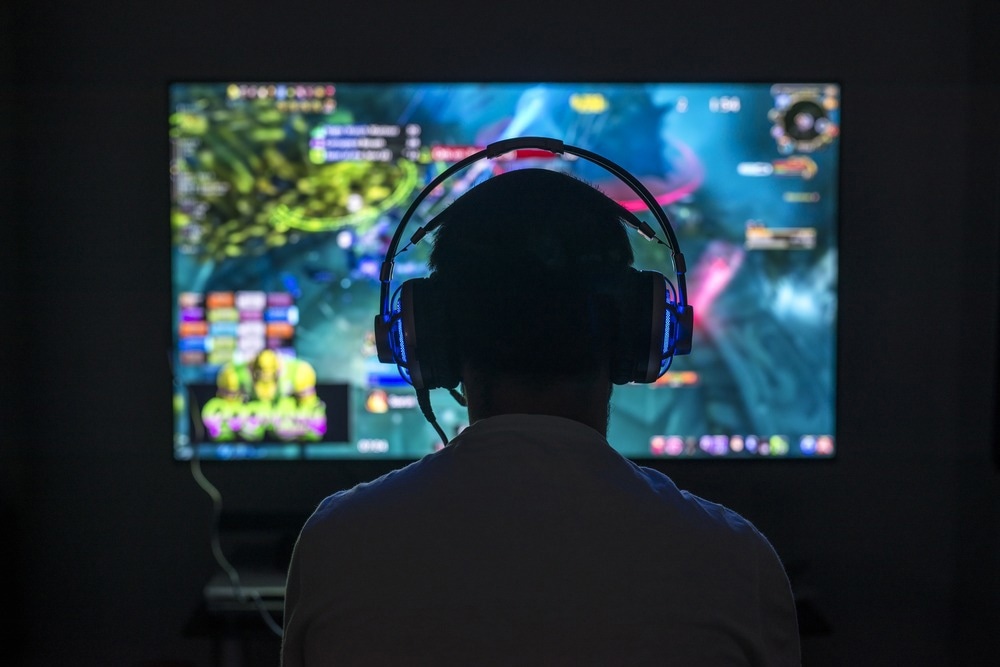A study published in the PLOS Public Health Journal researched the effect of coronavirus disease 2019 (COVID-19) on internet gaming disorder among the general population.
Study: Effect of COVID-19 pandemic on internet gaming disorder among general population: A systematic review and meta-analysis. Image Credit: sezer66/Shutterstock.com
Background
The advent of low-cost rapid internet access technologies, coupled with that sophisticated smartphones, has led to the rise of internet gaming disorder (IGD) over the last couple of decades.
This could potentially have been exacerbated by the COVID-19 pandemic. A new paper explores this possibility via a survey and meta-analysis of studies dealing with IGD during the pandemic years.
Introduction
With the onset of COVID-19, much of routine living activities, including socialization, education, and shopping, shifted to the online space.
Entertainment, which was already copiously provided by that point in the form of movies, videos, and online games, became the refuge for millions of people indisposed to, or cut off from, other forms of social interaction and physical recreation.
Internet games or online games are video games that require to be played partly or completely through a computer network.
It is showing exponential growth, with almost three billion gamers having been reported the world over. Much of this growth occurred during COVID-19.
Why is internet gaming a problem?
Scientists say that moderate use of internet games can be fun and reduce stress, improving the ability to learn by sharpening cognitive skills.
In excess, though, gaming may ruin the musculoskeletal balance, cause depression and poor sleep habits, reduce academic skills and prevent optimal achievement in these fields, cause eating habits to change. Moreover, it poses the risk of addiction, causing IGD, and can decrease the quality of life.
The American Psychiatric Association describes IGD as a…
…persistent and recurrent use of the internet to engage in games, often with other players, leading to clinically significant distress.”
The current study assessed how much the pandemic affected IGD prevalence. Providing data for suitable interventions to be framed by individuals, private groups, and public policy makers, for the prevention and treatment of this mental disorder.
What did the study show?
The researchers carried out three independent meta-analyses on nine studies, with an additional systematic review of 24 observational papers. Most of the participants were younger, thus more prone to use technology and to become addicted to the internet, as to other addictive agents.
The younger population is more likely to be isolated from society and to be free of restrictions on their environment, factors that increase the risk of IGD.
One systematic review from 2018, covering East Asia, showed the highest IGD prevalence to be between the ages of 12 and 20 years.
One meta-analysis of three studies showed that the prevalence of IGD was 8%, that is, encompassing over one in seven of the population.
These studies came from three Asian countries, comprising almost 3,000 subjects. The researchers suggest that this may indicate a rise in IGD prevalence during the pandemic in South-East Asia.
A second one, including four studies, showed a pooled mean of ~16.6, which did not meet the cut-off value of the IGDS9-SF tool. These studies came from India, Italy, Iran and Nepal and were quite heterogeneous, making the conclusion unreliable.
A third meta-analysis, on two studies, compared two groups, finding no significant difference in the rates of IGD before or after the pandemic.
Direct comparisons of IGD rates between countries are difficult because of the lack of standardized assessment tools, differences in the tested population and in the diagnostic criteria used.
Notably, most studies included in the review were from China, which has recently seen an upsurge in internet games among youth and teenagers. In 2022, there were 666 million internet gamers in the country, and most were above the age of 18 years.
An earlier study from Nanchong, China, found significant evidence of clinical IGD in a tenth of male college students during pre-pandemic years. China has thus put into place several preventive and therapeutic interventions to modulate this risk.
Children below 18 years are not allowed to game outside specified hours, for instance, and there are 250 centers for gaming detoxification and rehabilitation in the country.
What are the implications?
The current study did not provide support for the hypothesis that the pandemic increased IGD rates. The strength of the conclusions is limited by the low number of studies, poor design, their significant heterogeneity, short follow-up periods, and poor strength of evidence.
Most studies came from Asia, especially China, and may therefore not represent the global picture.
A better understanding of IGD and its prevalence during periods of stress like the COVID-19 pandemic can better help individuals who rely on the internet and online gaming for entertainment or coping with stress.”
The researchers call for better studies to understand the current situation and evaluate the risk, such that IGD can be properly addressed using appropriate interventions.


